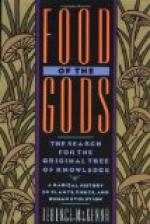Much has been written of life on a cocoa estate; and all who have enjoyed the proverbial hospitality of a West Indian or Ceylon planter, highly praise the conditions of their life. The description of an estate in the northern hills of Trinidad will serve as an example. The other industry of this island is sugar, in cultivating which the coloured labourers work in the broiling sun, as near to the steaming lagoon as they may in safety venture. Later on in the season the long rows between the stifling canes have to be hoed; then, when the time of “crop” arrives, the huge mills in the usine are set in motion, and for the longest possible hours of daylight the workers are in the field, loading mule-cart or light railway with massive canes. In the yard around the crushing-mills the shouting drivers bring their mule-teams to the mouth of the hopper, and the canes are bundled into the crushing rollers with lightning speed. The mills run on into the night, and the hours of sleep are only those demanded by stern necessity, until the crop is safely reaped and the last load of canes reduced to shredded megass and dripping syrup.
But upon the cocoa estate there is lasting peace. From the railway on the plain we climb the long valley, our strong-boned mule or lithe Spanish horse taking the long slopes at a pleasant amble, standing to cool in the ford of the river we cross and re-cross, or plucking the young shoots of the graceful bamboos so often fringing our path. Villages and straggling cottages, with palm thatch and adobe walls, are passed, orange or bread-fruit shading the little garden, and perhaps a mango towering over all. The proprietor is still at work on the plantation, but his wife is preparing the evening meal, while the children, almost naked, play in the sunshine.
[Illustration—Black and White Plate: The Home of the Cacao. (One of Messrs. Cadburys’ Estates, Maracas, Trinidad.)]
The cacao-trees of neighbouring planters come right down to the ditch by the roadside, and beneath dense foliage, on the long rows of stems hang the bright glowing pods. Above all towers the bois immortelle, called by the Spaniards la madre del cacao, “the mother of the cacao.” In January or February the immortelle sheds its leaves and bursts into a crown of flame-coloured blossom. As we reach the shoulder of the hill, and look down on the cacao-filled hollow, with the immortelle above all, it is a sea of golden glory, an indescribably beautiful scene. Now we note at the roadside a plant of dragon’s blood, and if we peer among the trees there is another just within sight; this, therefore, is the boundary of two estates. At an opening in the trees a boy slides aside the long bamboos which form the gateway, and a short canter along a grass track brings us to the open savanna or pasture around the homestead.




